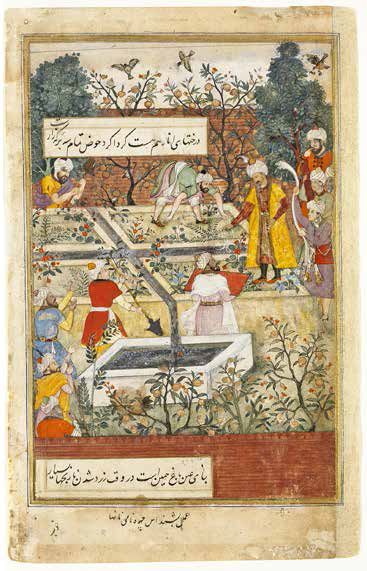Art & Culture
THE AESTHETICS OF PLANTINGS IN EARLY MUGHAL GARDEN PAINTINGS II: HISTORICAL MANUSCRIPTS | James L. Wescoat Jr.
LA 63 |
|
The first essay in this series introduced the aesthetics of planting design in early Mughal paintings, a rich source of evidence for landscape architects and horticulturalists. It focused on two of the earliest Mughal manuscripts in the mid-16th century, the Tutinama and Hamzanama, which illustrated marvelous legends and morality tales. They featured the aesthetics of “treelined forest borders” and lushly planted “garden enclosures,” displaying diverse species in two distinct spatial layouts.
This second essay builds upon those themes as they developed in historical texts like the Baburnama and Akbarnama. The iconic painting of Babur Laying out the Garden of Fidelity is the most famous Mughal painting of a historical garden, reproduced in almost every publication on Mughal gardens, but its planting design has not received the detailed attention that it deserves [Wescoat, 1989].
|
|
 |
|
Historical plantings have special relevance for landscape architects because they are the most frequently encountered vegetation in professional practice [Shaheer 2016]. Every site has existing plants that require a close study by designers [Gupta 2018]. Some plants and plantings figured prominently in historical events depicted in Mughal paintings, they are not merely decorative. Others show how plants enriched the daily cultural life of historical villages and towns. Almost all of the plants of early Mughal times are long gone, but the plantings depicted in historical paintings have continuing value for garden historians, designers, and heritage conservationists.
|
|


|
|

|
|
|
|
|